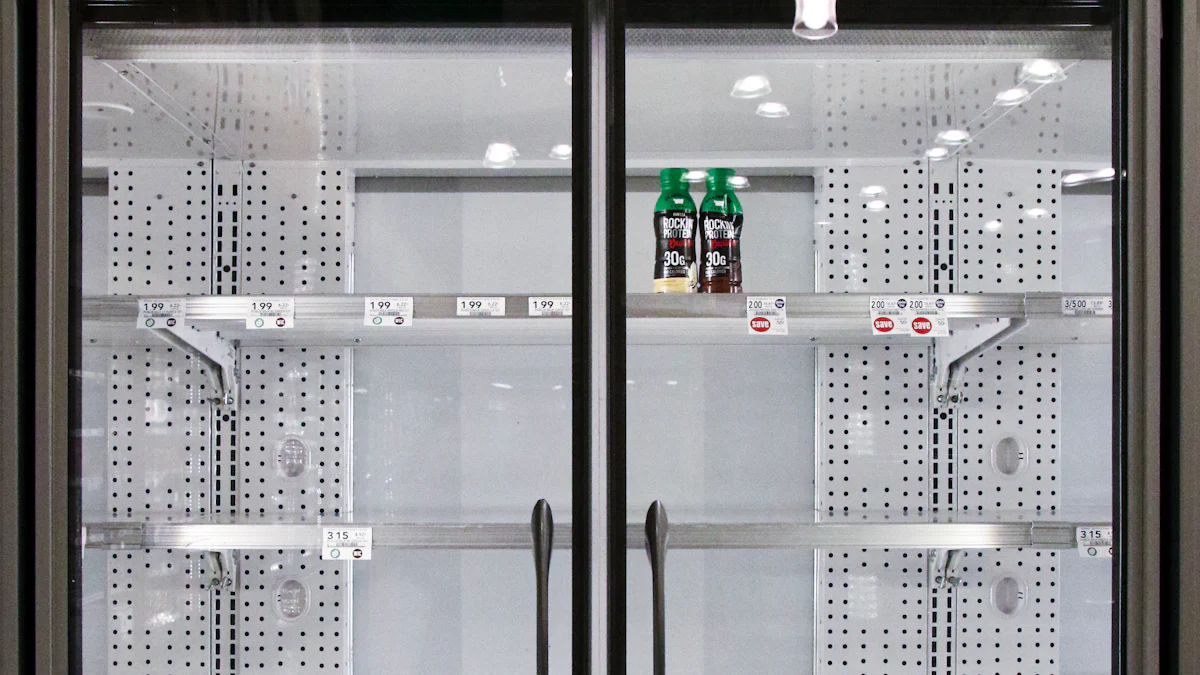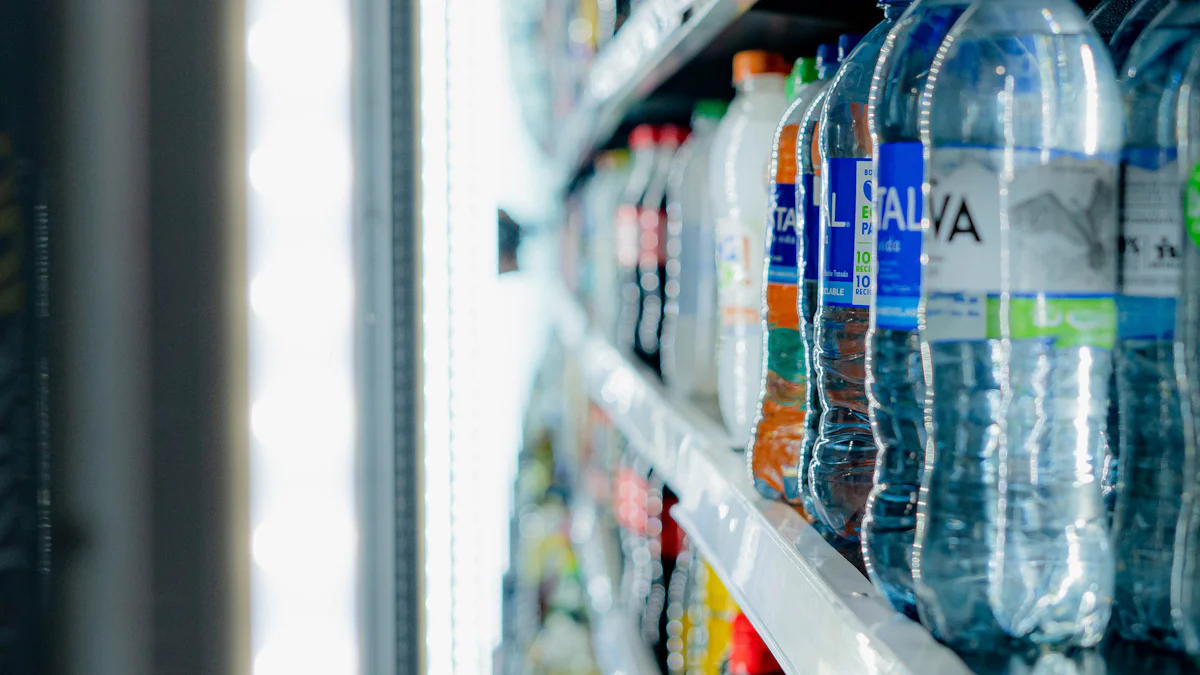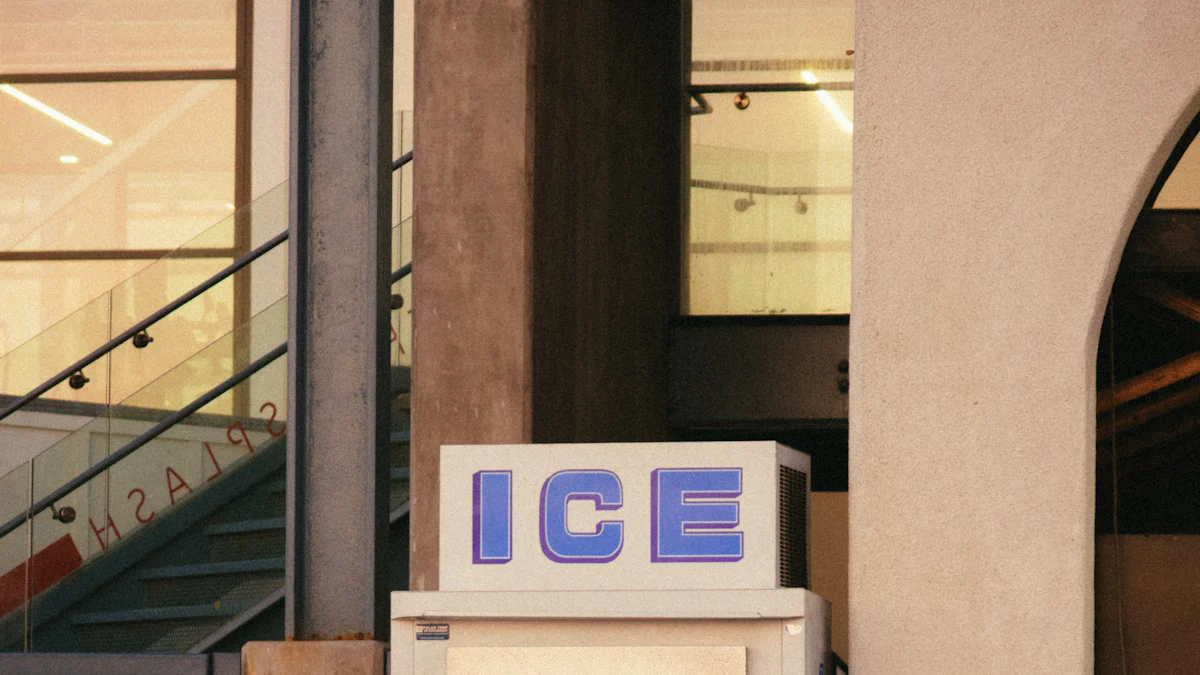Essential Guide to Freezer Room Installation

Proper freezer room installation plays a vital role in maintaining efficiency and durability. A well-installed freezer room ensures consistent temperature control, which preserves the quality of perishable goods. By following a step-by-step guide, you can achieve a reliable system that reduces energy consumption and enhances safety.
The benefits of a properly installed freezer room are measurable. Consider the following:
Benefit | Description |
|---|---|
Reduced energy consumption leads to lower electricity bills, making the overall operation more cost-effective. | |
Environmental Impact | Energy-efficient systems help reduce carbon footprint, contributing to a more sustainable and environmentally friendly operation. |
Product Quality | Consistent temperature management ensures the preservation of perishable goods, maintaining their quality and shelf life. |
By focusing on these aspects, you can create a freezer room that meets your needs while promoting sustainability.
Planning and Preparation for Freezer Room Installation
Proper planning is the foundation of a successful freezer room installation. By taking the time to draft a plan and follow a step-by-step guide, you can ensure the process runs smoothly and meets your specific needs.
Assessing Size and Location
Determining storage requirements
Start by evaluating how much storage space you need. Consider the volume of goods you plan to store and their dimensions. This helps you calculate the required capacity of the freezer room. Overestimating or underestimating this can lead to inefficiencies.
Selecting an optimal site
Choose a location that supports easy access and efficient workflow. Ensure the site has adequate space for installation and maintenance. Avoid areas prone to flooding or extreme temperature fluctuations. A well-chosen site improves the longevity and performance of your freezer room.
Preparing the Site
Levelling the floor surface
A level floor is essential for proper installation. Use a spirit level to check the surface and make adjustments as needed. Uneven floors can compromise the stability of the structure and lead to long-term issues.
Ensuring a smooth concrete finish
A smooth concrete finish provides a sturdy base for the freezer room. Remove any debris or imperfections from the surface. This step ensures the insulation panels fit securely and prevents air leaks.
Obtaining Permits and Approvals
Understanding local regulations
Research local building codes and regulations before starting the installation. These rules often dictate the materials, design, and safety features required for freezer rooms. Compliance ensures your project meets legal standards.
Securing necessary documentation
Obtain the permits and approvals needed for your project. This may include construction permits, electrical certifications, and safety inspections. Proper documentation avoids delays and ensures a hassle-free installation process.
Tip: Keep all permits and approvals organised for future reference. This can be helpful during inspections or maintenance.
Choosing Materials and Equipment
Insulation panels and materials
Selecting the right materials for insulation is critical to maintaining the efficiency of your freezer room. Cold room panels play a vital role in creating an airtight environment that prevents heat transfer. This ensures consistent low temperatures, which improves energy efficiency and durability.
When choosing cold room panels, consider their insulation properties, durability, and environmental impact. Materials like Polyurethane (PUR), Polyisocyanurate (PIR), and Expanded Polystyrene (EPS) are popular options. Each offers unique benefits:
Material Type | Additional Notes | |
|---|---|---|
PUR | 5-7.1 | High insulation, moisture resistant |
PIR | 7-8.0 | Enhanced fire resistance, energy efficient |
EPS | 4-5 | Good insulation, cost-effective |
PUR panels provide excellent insulation and resist moisture, making them lightweight and reliable. PIR panels offer superior thermal performance and enhanced fire resistance, ideal for long-term energy savings. EPS panels are a cost-effective choice with decent insulation properties.
Tip: Look for materials with high thermal resistance to minimise heat transfer and maintain the desired temperature. This not only saves energy but also extends the lifespan of your freezer room.
Refrigeration systems and accessories
The refrigeration system is the backbone of your freezer room. It ensures consistent cooling and preserves the quality of stored goods. When selecting a system, focus on its capacity, energy efficiency, and compatibility with your freezer room size.
Air coolers are a common choice for maintaining low temperatures. They distribute cold air evenly, preventing hotspots. Ensure the system includes accessories like thermostats and temperature monitoring devices. These tools help you maintain precise control over the internal environment.
Additionally, consider the environmental impact of your refrigeration system. Opt for systems that use eco-friendly refrigerants and consume less energy. This reduces your carbon footprint while lowering operational costs.
Note: Regular maintenance of refrigeration systems is essential. Clean the components and check for leaks to ensure optimal performance.
Structural Installation of a Walk-In Freezer

Proper structural installation is crucial for the performance and longevity of your walk-in freezer. By following the right steps, you can ensure a durable and efficient setup.
Installing Insulated Walls and Panels
Panel assembly process
Begin by framing the walls and ceiling with pressure-treated lumber or metal studs. This creates a sturdy base for the cold room panels. Ensure the framing is properly aligned to simplify the installation process. Next, apply a thick layer of insulation to the walls, ceiling, and flooring. This step is essential for maintaining freezing temperatures. During this process, ventilate the area to prevent moisture build-up. Finally, position the freezer door carefully, attach the hinges and locks, and seal the edges with freezer-compatible silicone caulk.
Ensuring proper insulation
Cold room panels are the backbone of your walk-in freezer. These panels must fit tightly to prevent air leaks. Use high-quality cold room panels with excellent thermal resistance. Check for gaps between panels and seal them with specialised tape or caulk. Proper insulation minimises energy loss and ensures consistent cooling.
Setting Up Flooring and Ceiling
Durable flooring options
Choose flooring materials that can withstand heavy loads and freezing temperatures. Epoxy-coated concrete and industrial vinyl are excellent options. These materials are non-slip and durable, making them ideal for freezer room installation. Install a vapour barrier beneath the flooring to prevent moisture accumulation, which can damage the structure over time.
Ceiling installation techniques
For the ceiling, use pressure-treated lumber or metal studs to create a strong frame. Ensure proper alignment to make insulation and panel installation easier. Add thick insulation to the ceiling to maintain low temperatures and prevent cold air loss. Secure the panels tightly to avoid gaps that could compromise the freezer's efficiency.
Sealing and Waterproofing
Preventing air leaks
Air leaks can significantly impact the performance of your walk-in freezer. Inspect all joints, corners, and panel connections for gaps. Seal these areas with silicone caulk or specialised tape. This step ensures an airtight environment, which is critical for maintaining consistent temperatures.
Moisture control strategies
Moisture can lead to mould growth and structural damage. Install a vapour barrier on the floor and walls to prevent condensation. Regularly check for signs of moisture and address any issues promptly. Proper sealing and moisture control protect your freezer room from long-term damage.
Tip: Always use the right materials for sealing and insulation. This ensures the durability and efficiency of your walk-in freezer.
Door and Accessories Installation in an Industrial Cold Room
Proper installation of doors and accessories is essential for the efficiency and functionality of your industrial cold room. These components play a critical role in maintaining temperature consistency and optimising storage.
Installing the Freezer Door
Types of doors and locking mechanisms
Choosing the right door for your industrial cold room depends on your specific needs. Each type offers unique advantages:
Advantages | |
|---|---|
Hinged Doors | Ease of access and a tight seal to prevent temperature loss. |
Sliding Doors | Space-saving design and reduced risk of trapping users; can be manual or automatic. |
Rapid Roll-Up Doors | Quick opening and closing for high-traffic areas, effectively maintaining internal temperatures. |
Hinged doors work well for smaller walk-in freezers, while sliding doors are ideal for larger spaces with limited clearance. Rapid roll-up doors suit high-traffic areas where frequent access is required.
Ensuring an airtight seal
An airtight seal is crucial for maintaining the low temperatures in your walk-in freezer. Inspect the door frame and gasket for gaps. Use high-quality gaskets and magnetic seals to prevent air leaks. Regularly check for wear and replace damaged components promptly. This ensures consistent cooling and reduces energy consumption.
Adding Lighting and Alarm Systems
Energy-efficient lighting solutions
Lighting in an industrial cold room must be both efficient and durable. LED lights are an excellent choice. They consume less energy, emit minimal heat, and last longer than traditional bulbs. Position the lights strategically to illuminate all areas without creating shadows. This improves visibility and safety while reducing electricity costs.
Temperature monitoring alarms
Modern alarm systems enhance the safety of your walk-in freezer. Advanced systems, like those from Sonicu, offer features such as:
Custom thresholds with high/low buffers to minimise false alarms.
Multiple notification methods, including SMS, email, and audible alerts.
Cloud-based platforms for remote access to temperature data.
IoT integration for real-time monitoring and data analysis.
These systems help you respond quickly to temperature fluctuations, protecting your stored goods from spoilage.
Incorporating Shelving and Storage
Maximising storage capacity
Efficient storage maximises the utility of your industrial cold room. Follow these steps:
Take stock and organise items by grouping similar products together.
Label containers with contents and dates to reduce waste.
Use flat, stackable containers and resealable bags to save space.
Utilise vertical space with shelves or baskets.
Freeze items in portion sizes to avoid unnecessary thawing.
Maintain a freezer inventory to track items and optimise space usage.
These practices ensure you make the most of your available storage while keeping the freezer organised.
Selecting durable shelving materials
Shelving in a walk-in freezer must withstand heavy loads and freezing temperatures. Stainless steel is a popular choice due to its durability and resistance to corrosion. Aluminium shelves are lightweight and cost-effective. Choose adjustable shelving systems to accommodate items of varying sizes. This flexibility helps you adapt to changing storage needs.
Tip: Regularly inspect shelves for damage or wear. Replace any compromised components to maintain safety and efficiency.
Refrigeration and Electrical Systems Setup

Installing the Refrigeration System
Air cooler installation
Proper air cooler installation is vital for maintaining consistent cooling in your walk-in freezer. Position the air cooler horizontally in the middle of the wall, away from the freezer door. This placement ensures even airflow and prevents cold air from escaping when the door opens. Maintain a gap of 300-500mm between the air cooler and the back wall to allow proper ventilation. Use special nylon screws to secure the cooling fan, which prevents cooling capacity leaks. Disconnect the fan motor during defrosting to stop hot air from entering the freezer. These steps ensure efficient cooling and prolong the system's lifespan.
Connecting refrigeration pipelines
Connecting refrigeration pipelines requires precision. Seal all pipeline holes to make them moisture-proof and heat-insulated. Install a pressure balance device to manage pressure differences between the industrial cold room and the external environment. This prevents structural damage and ensures smooth operation. Position the control panel near the Kumen for easy access during maintenance. These measures enhance the reliability of your refrigeration system.
Tip: Regularly inspect pipelines for leaks or damage. Prompt repairs prevent energy loss and maintain efficiency.
Electrical Wiring and Control Panels
Power supply requirements
A reliable power supply is essential for your walk-in freezer. Ensure the electrical system meets the freezer's energy demands. Use dedicated circuits to avoid overloading and install surge protectors to safeguard against power fluctuations. These precautions minimise the risk of electrical failures.
Setting up control panels
Control panels allow you to monitor and adjust the freezer's settings. Position the panel in an accessible location, such as near the entrance. This placement simplifies operation and maintenance. Use labelled switches and indicators to make the panel user-friendly. A well-organised control panel ensures smooth operation and quick troubleshooting.
Drainage and Ventilation Systems
Proper drainage installation
Effective drainage prevents water accumulation during cleaning or defrosting. Install floor drains in the freezer to channel water away efficiently. Use sloped flooring to guide water towards the drains. Regularly check the drainage system for blockages to maintain hygiene and prevent structural damage.
Ensuring adequate ventilation
Ventilation is crucial for maintaining air quality in your industrial cold room. Install vents to allow fresh air circulation and prevent odours. Ensure the ventilation system complies with local regulations to avoid condensation and mould growth. Proper ventilation enhances the safety and efficiency of your freezer room.
Note: Combine drainage and ventilation systems with regular maintenance to ensure long-term performance.
Final Checks and Safety Considerations for Freezer Room Installation
Conducting Performance Tests
Temperature calibration
Calibrating the temperature is essential for ensuring your industrial cold room operates efficiently. Use a reliable thermometer to measure the internal temperature at different points. Compare these readings with the settings on your control panel. Adjust the thermostat if discrepancies arise. This process ensures the freezer maintains the desired temperature, preserving the quality of stored goods.
Identifying and resolving issues
Inspect the freezer room thoroughly for potential problems. Check for air leaks around the door and panel joints. Listen for unusual noises from the refrigeration system, which could indicate mechanical issues. Address these problems promptly to prevent further damage. Regular inspections help you maintain optimal performance and avoid costly repairs.
Implementing Safety Features
Emergency exit mechanisms
Install emergency exit mechanisms to enhance safety in your industrial cold room. These mechanisms allow individuals to exit quickly if they become trapped inside. Choose systems with glow-in-the-dark handles or push-release bars for better visibility. Test the emergency exits regularly to ensure they function correctly.
Fire and electrical safety protocols
Follow local building codes to implement fire and electrical safety measures. Equip the freezer room with fire extinguishers rated for electrical fires. Install smoke detectors and ensure proper wiring to minimise fire risks. Use surge protectors to safeguard electrical components from power fluctuations. These precautions protect both the equipment and personnel.
Seeking Professional Assistance
When to consult experts
Consult professionals if you encounter complex issues during freezer room installation. Experts can assist with tasks like refrigeration system repairs or electrical wiring. Their expertise ensures the job is done correctly, reducing the risk of future problems. Hiring professionals also helps you comply with local building codes.
Maintenance and servicing tips
Regular maintenance extends the lifespan of your industrial cold room. Follow these practices:
Maintain 6 inches of clearance between walls and the freezer, and 8 inches overhead.
Clean filters and condenser coils every six months.
Inspect door gaskets to prevent ice build-up.
Organise inventory to reduce door opening frequency.
Pre-cool items before loading them in batches.
These steps keep your freezer room efficient and reliable.
Tip: Schedule professional servicing annually to address issues beyond routine maintenance.
Installing a freezer room requires careful planning and execution. You need to follow a step-by-step guide to ensure every aspect, from site preparation to refrigeration setup, is completed correctly. Using high-quality materials and equipment guarantees durability and efficiency. Prioritising safety measures, like emergency exits and fire protocols, protects both your goods and personnel.
By adhering to these principles, you can achieve a freezer room installation that meets your needs and operates reliably. Take the time to plan thoroughly and follow this guide to create a system that delivers long-term benefits.
See Also
Choosing Between Cold Rooms And Freezer Rooms Effectively
Essential Guide To Purchasing A Tunnel Freezer
Unique Characteristics Of Cold And Freezer Rooms

